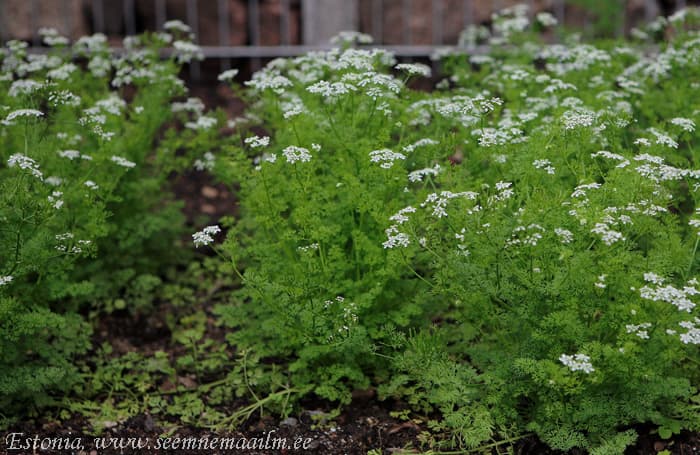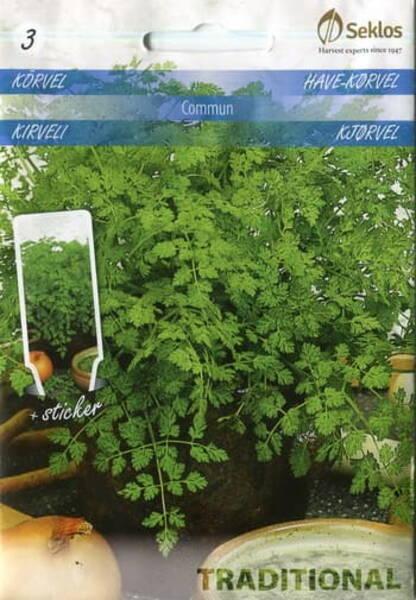Annual spice plant of 30-60 cm height. Young fresh waved leaves before bloomy period are used for food. Leaves have a nice anise scent. Due to chervil, your food becomes not just aromatic, but also enriched with vitamins C, A, also magnium and Fe.
Suitable for meat, soups, sauce, tones and provokes appetite.
Enriched with humus, wet loamy soil, a semi shadow or a sunny place suits the best. Suitable for sowing in summer and in autumn.
Chervil could be sought or sprouts could be planted among salad. It will protect salad of blight, earthworms and ants.
1 g contains approximately 400 seeds.

Sensoric quality.
Sweet and aromatic, somewhat intermediate between parsley and anise. On other spices with a similar fragrance. Main constituents The plant contains only minor amounts of essential oil (0.3% in the fresh herb, 0.9% in the seeds); it contains methylchavicol (estragole) and hendecane (undecane). Origin Probably Southern Europe or the Caucasus region. Chervil became known in the regions north of the Mediterranean by the edict of Charlemagne, Capitulare de villis (see lovage).

Eng.: Garden chervil, cow parsley, french parsley, garden chervil. Suom.: Maustekirveli. Sven.: Dansk körvel, körvelkäx, trädgårdskörvel.
Bot. syn.: Anthriscus longirostris Bertol., Cerefolium anthriscus L., Cerefolium cerefolium L., Chaerefolium cerefolium L., Chaerophyllum sativum Lam., Scandix cerefolium L.












